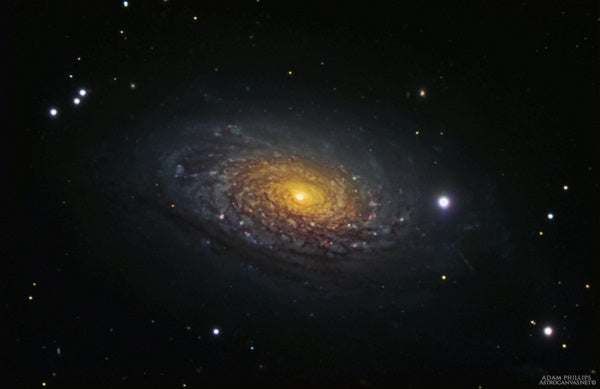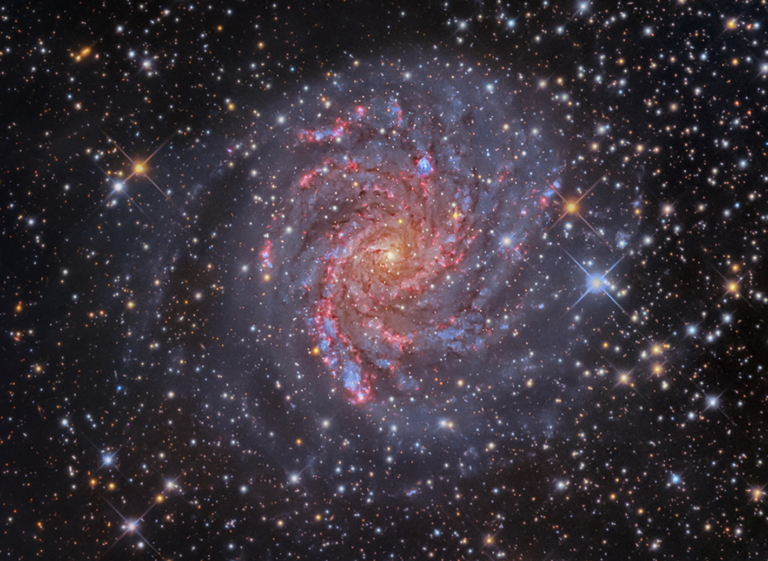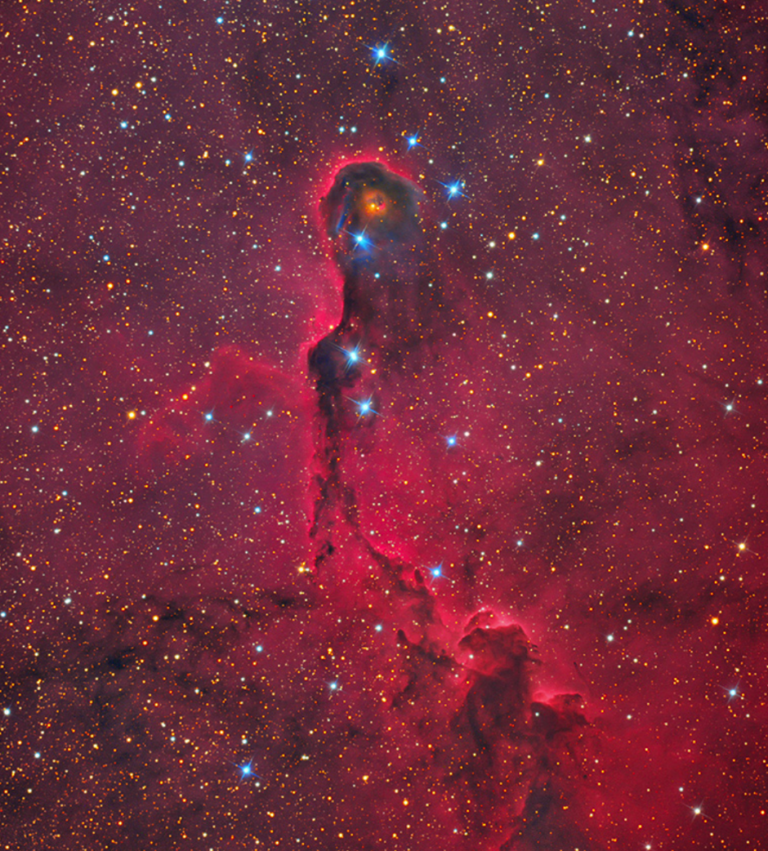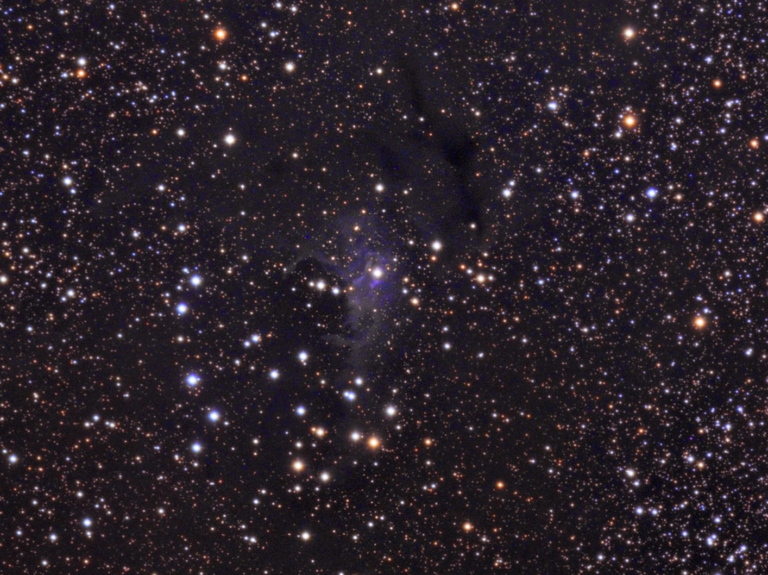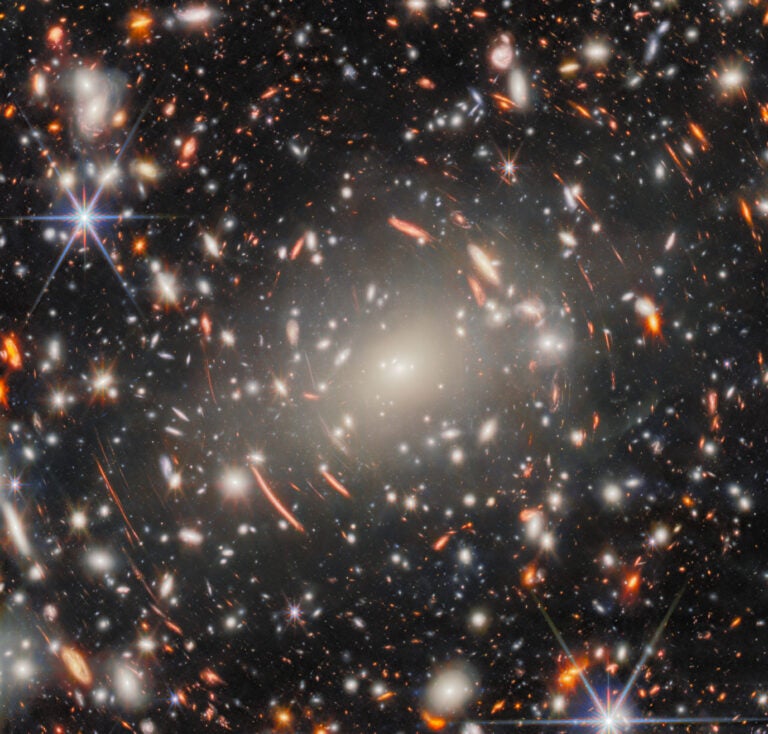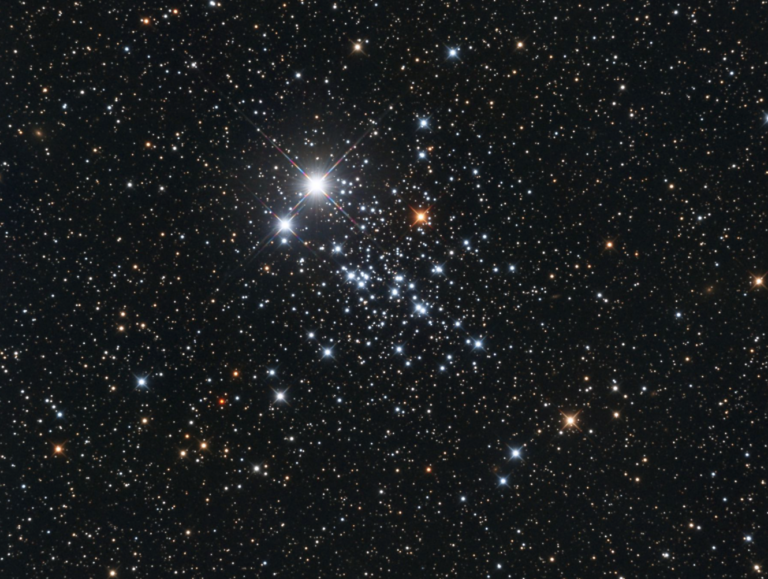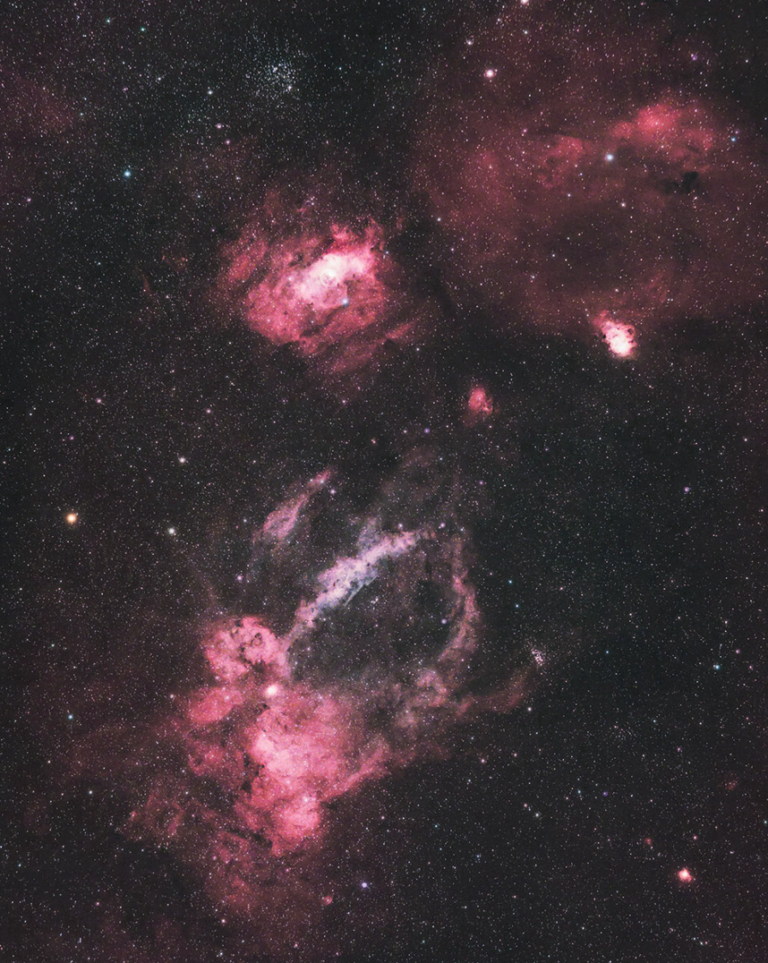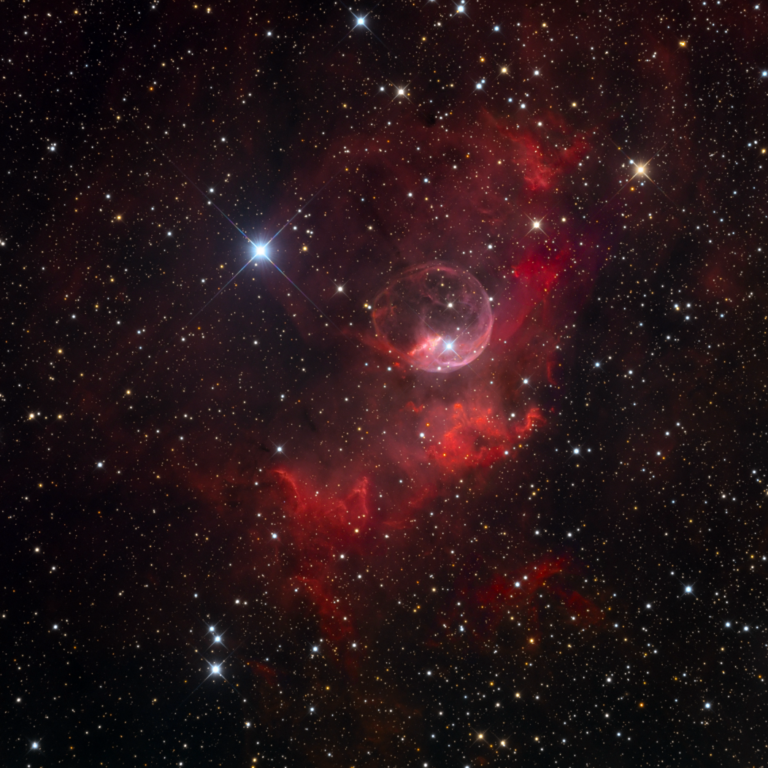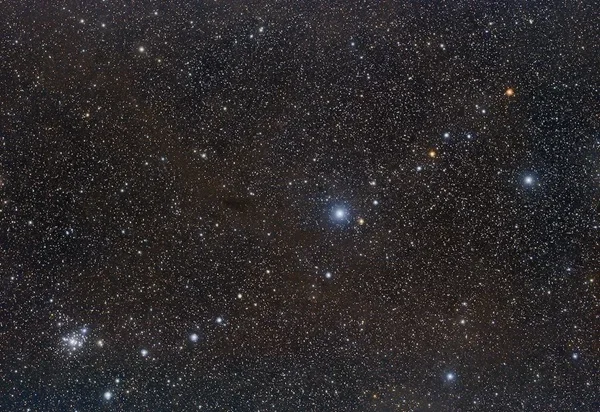Among the heavens’ most beautifully haphazard galaxies is M63, the Sunflower Galaxy. This massive, curdled spiral sports only two arms, but their flocculate (feathery or disjointed) nature makes them hard to define. M63 is nicknamed the Sunflower Galaxy because of its resemblance to the dense, seedy head of that towering plant, which is ringed by an abundance of bright, overlapping petals. In images, it’s the vast infiltration of dust that largely allows the eye to trace out the spiral’s structure, which shows up more clearly in infrared images.
M63 was a Pierre Méchain discovery. A contemporary of Charles Messier, Méchain was an astute observer but had no interest in cataloging new nebulae and clusters. He did, however, communicate them to Messier, who, in turn, checked their positions, and added them to his catalog with credit. William Parsons, Earl of Rosse, discovered its spiral structure, making it one of 14 “spiral nebulae” discovered by 1850. He had no idea, however, of their true nature.
At 100,000 light-years across, M63 rivals our Milky Way in size, but its structure is different. M63 has no central bar and only moderate to loosely wound arms. The galaxy displays strong spiral structure from its nucleus out to around 10,000 light-years; after that, there is a significant lack of cohesion. Within its lenticular nuclear region lies an active galactic nucleus and several young star clusters. A dim system of arches and “plumes” blossom from the galaxy’s periphery, suggesting the galaxy consumed a dwarf companion in the last few billion years. Recent studies have shown about a dozen additional dwarf galaxies gravitationally bound to M63 — perhaps tempting, appetizing morsels for this extragalactic cannibal.
To find M63, look about 1½° north-northwest of 20 Canum Venaticorum, which shines at magnitude 4.5. Moderate-sized telescopes will show this milky white glow sporting an intense starlike nucleus within a mottled disk, which appears to form a ring around the lenslike nuclear region. The galaxy’s inner spiral arms are best left to larger telescopes and astrophotographers.
Make sure to explore Astronomy’s full list of 101 cosmic objects you must see. New entries will be added each week throughout 2022.
To get the latest astronomical news and observing content delivered directly to your door, subscribe to Astronomy magazine today!

